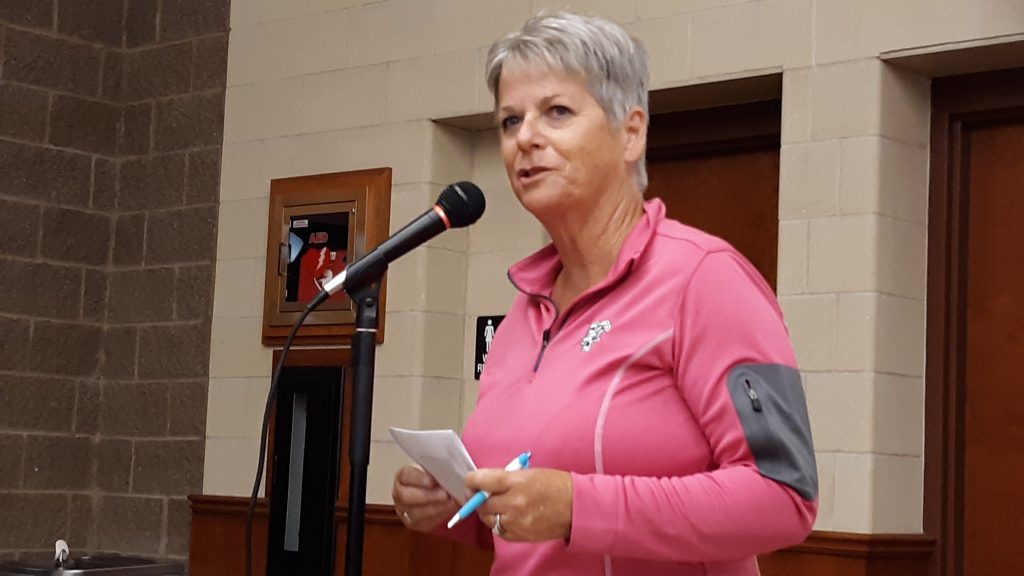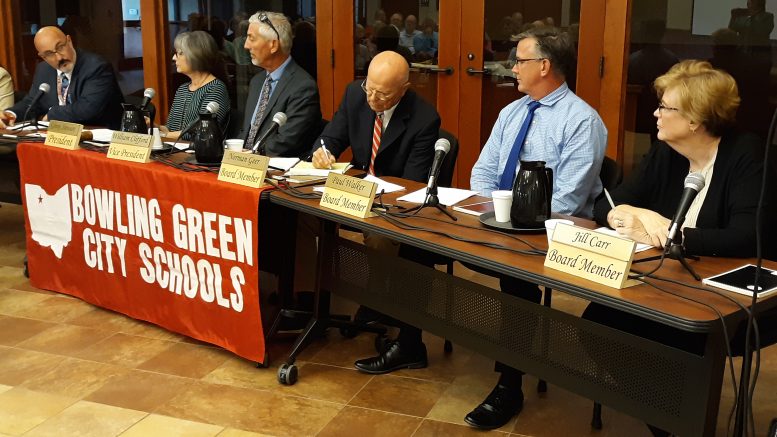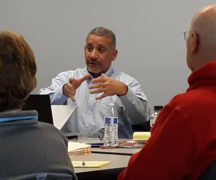By JAN LARSON McLAUGHLIN
BG Independent News
Combining smaller elementary schools into one building is more difficult for parents than for their children, according to a retired administrator with Defiance City Schools.
John Gehres, one of several citizens to speak in front of Bowling Green Board of Education Thursday evening, said that while parents struggle with giving up smaller elementaries, the kids benefit from consolidated schools.
“I respect everyone who loves their neighborhood schools, but we’ve got to move forward,” Gehres said.
Defiance City Schools had a similar problem, with some of the district residents reluctant to say farewell to their smaller schools.
“It seems that we as adults have a hard time giving up our schools,” Gehres said. The children don’t mind, “but as adults, we’re kind of bullheaded.”

In Defiance, the district went from four elementaries to one.
Gehres confessed to being a “tight fiscal person,” with no children in Bowling Green’s school system and living on a retirement income.
“But education of our students is number one,” he said.
Gehres said his grandson attended Kenwood Elementary, where he got a “phenomenal education.”
“But our physical facilities are behind the time,” he said. “It’s our turn to give back to the community.”
Another citizen, Steve Goyer, thanked the Bowling Green Board of Education members for putting a property/income tax issue on the November ballot to build one new elementary school.
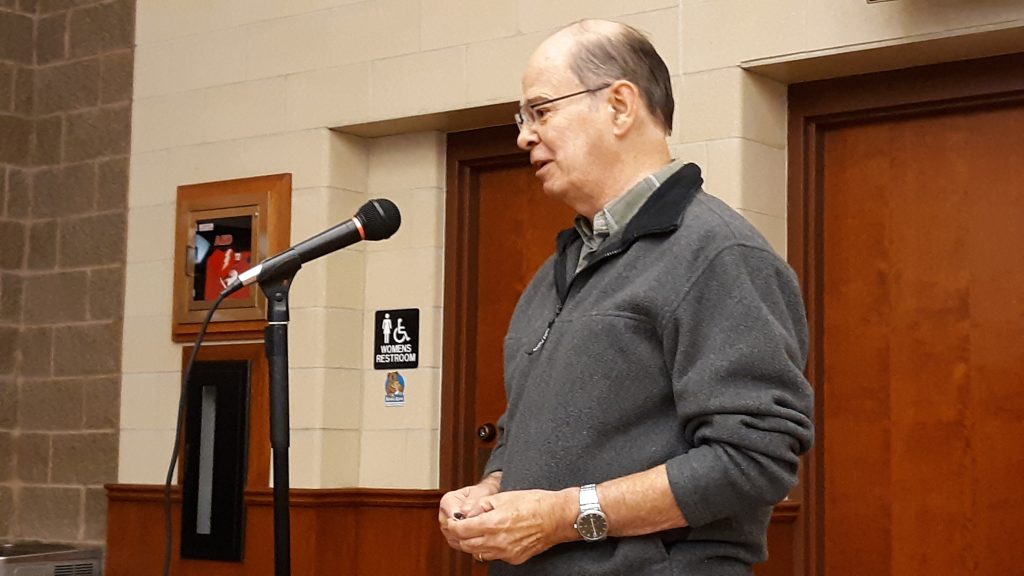
“Thank you for your efforts,” he said. “ We’re all one community.”
Goyer questioned the use of the name, “Save Our Schools,” for the organization of citizens opposed to one elementary.
“Who can be against schools,” he asked, suggesting that those supporting one elementary should perhaps use the name, “Save our Children from an Unequal Education.”
“I would like to see us come together in our community,” Goyer said.
But not everyone expressed those same feelings of support for the property and income tax issue on November’s ballot.

Grant Chamberlain reminded the board of his repeated requests for more transparency in school expenses.
“I’ve been trying to dig in your guys’ finances,” he said. “That’s our money.”
Chamberlain said the board and administration have been reluctant to give him all the information he has asked for in a timely manner.
“That will never happen if I’m sitting up there,” said Chamberlain, who is running for a school board seat. “At every turn I’ve been met with resistance to that.”

Richard Strow suggested that the school board needs to look at the Safe Routes to School grant program now – not wait to see if the building issue passes. He was critical of the board for not applying for more grant funding.
“I’m very knowledgeable about the need for grants,” said Strow, who is also running for a board seat.
Richard Chamberlain criticized Superintendent Francis Scruci and the board for going ahead with plans for one elementary school.
“That’s not what the task force recommended,” he said.

But supporters of the ballot issue and new school fired back.
“And now for something completely different – the facts,” said Ben Otley.
The majority of the facilities task force members supported the concept of one community elementary.
“The board did exactly, exactly what the task force recommended,” Otley said.
The finance task force recommended that a split property and income tax be used to pay for the school. And again, the board complied.
“We don’t have neighborhood schools,” Otley said, noting that 90 percent of the district’s students are transported to and from school by buses, daycare vans or family vehicles.
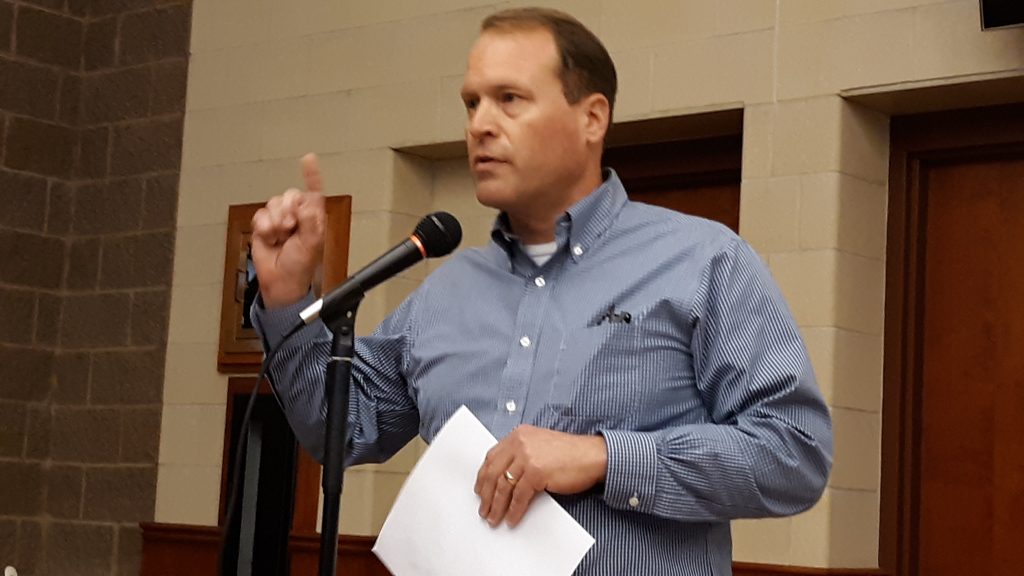
Otley then discussed the condition of Bowling Green’s schools.
“Our facilities are outdated,” he said. Conneaut Elementary has students in three trailers, and Crim Elementary has students in one modular classroom.
“Bowling Green’s buildings are the oldest and most outdated in Wood County,” Otley said.
And that is affecting the entire community, he added.
“It’s a major economic development obstacle for Bowling Green,” Otley said. “We are behind everybody else. Our competition is kicking our butt. People are not moving here because of the schools.”
Waiting, he said, will only end up costing the district more.
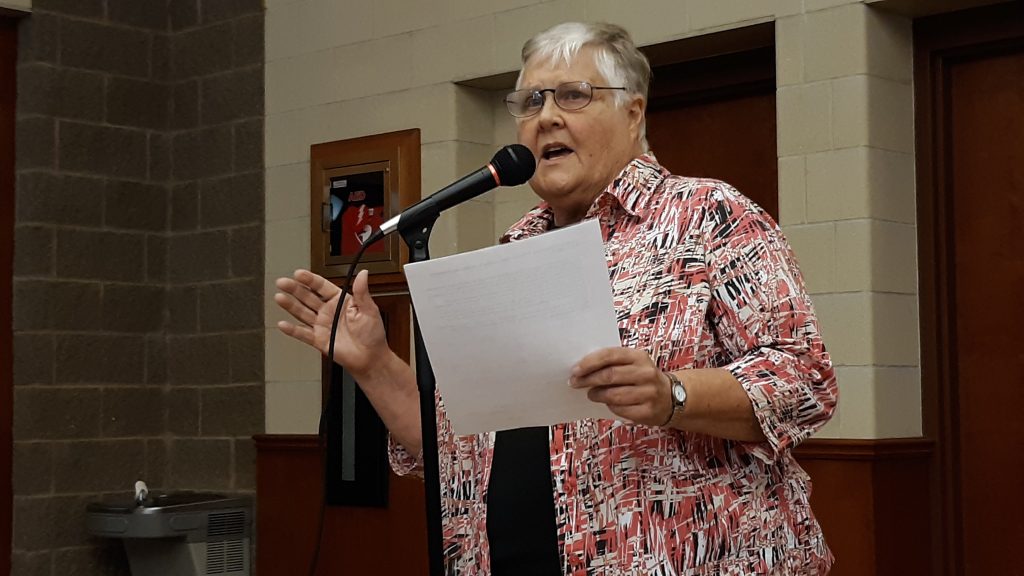
Linda Lander, who spent her career in education, also said the school board was acting on the preference the facilities task force when the decision was made to build one school.
“The school board made the correct decision,” Lander said.
And Melanie Stretchbery said the effort to keep neighborhood schools only benefits a very small group of people.
“They are only the neighborhood school if you live in that neighborhood,” Stretchbery said.
